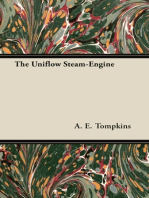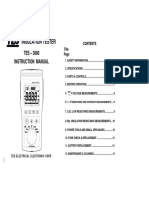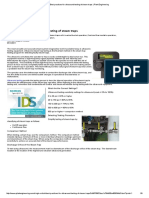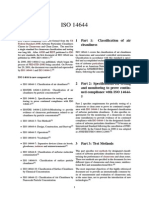Figure 13. Compressor and Condenser Power Versus Discharge Pressure
Figure 13. Compressor and Condenser Power Versus Discharge Pressure
Uploaded by
Julio RicardoCopyright:
Available Formats
Figure 13. Compressor and Condenser Power Versus Discharge Pressure
Figure 13. Compressor and Condenser Power Versus Discharge Pressure
Uploaded by
Julio RicardoOriginal Title
Copyright
Available Formats
Share this document
Did you find this document useful?
Is this content inappropriate?
Copyright:
Available Formats
Figure 13. Compressor and Condenser Power Versus Discharge Pressure
Figure 13. Compressor and Condenser Power Versus Discharge Pressure
Uploaded by
Julio RicardoCopyright:
Available Formats
8.5.
HEAD-PREsSURE CONTROL
There exists for each installation and set of operation parameters a discharge pressure
giving minimum energy consumption. There may in a certain installation be technical
limits like defrost design, allowed compressor range, screw compressor oil separators,
expansion valve capability, liquid line flashing, heat rec1aim and others. Every degree
centigrade change of to the discharge pressure corresponding saturation temperature will
change the compressor power demand by 2-3% as a rule of thumb. A yearly lowering of
the average "discharge temperature" of 10 degrees or more is normally obtainable
together with changes in the above-mentioned limiting factors. When head pressure
varies with load and weather conditions, it is sometimes referred to as floating head
pressure.
For evaporative condensers, the main weather parameter is the wet-bulb temperature
in the airflow to the condenser.
Wet Bulb Temperature
Condensing pressure may never
be lower
a:
~
e
a.
Condensorpower + compressor power
Minimum
Power demanc
I
Condensor power
,
DISCHARGE PRESSURE
Figure 13. Compressor and condenser power versus discharge pressure
For each new set of operation parameters this "best" pressure will change. The
control system should be set to find this point considering the technical limitations. A
good start is to set the discharge pressure Te=O.9x~v +9.5C, where Twis the wet bulb
temperature. For systems with more than one evaporative condenser, one should find the
best control method for each installation. If possible, operate equal condensers part
loaded in parallel to keep as much heat transfer area as possible. In many older
installations there is no possibility to part load condensers. Look into the possibility to
install speed control for the main fans not only for one condenser if more than one existo
For air-cooled condensers a similar possibility exists starting with the requirement
that the sum of condenser fan power and compressor power should be at a minimum.
Rere the limiting parameter is the dry-air temperature before the condenser.
For air-cooled condensers, the use of the whole condenser area is advantageous and
You might also like
- Sizing of Air ReceiverDocument6 pagesSizing of Air Receiverraghu_mn100% (3)
- Gas TurbineDocument5 pagesGas TurbineAbdul BasitNo ratings yet
- Basic Chiller System Design Part2Document48 pagesBasic Chiller System Design Part2Sivakumar NadarajaNo ratings yet
- B U L L E T I N: Application EngineeringDocument2 pagesB U L L E T I N: Application EngineeringMaria DazaNo ratings yet
- Condenser Backpressure Vacuum System SizingDocument3 pagesCondenser Backpressure Vacuum System Sizinghappale2002100% (1)
- Vav Box Reheat Selection: Krueger KruegerDocument5 pagesVav Box Reheat Selection: Krueger KruegerKia KhosraviNo ratings yet
- Air CompressorDocument23 pagesAir CompressorsaadNo ratings yet
- International Journal of Engineering ResDocument6 pagesInternational Journal of Engineering RescounselorstudentsNo ratings yet
- Two-Stage Air CompressorDocument31 pagesTwo-Stage Air CompressorEjad Afifi33% (3)
- R&T 2004 - VFD Condensers - ReindlDocument23 pagesR&T 2004 - VFD Condensers - ReindlPRKrauseNo ratings yet
- CTV Eb 84Document8 pagesCTV Eb 84btgottlieb100% (3)
- How To Increase Compressor EfficiencyDocument3 pagesHow To Increase Compressor EfficiencyNaqqash SajidNo ratings yet
- Vav SystemsDocument8 pagesVav SystemsjaimephcolNo ratings yet
- Report On Cascade Refrigeration SystemsDocument11 pagesReport On Cascade Refrigeration SystemsJashandeep SinghNo ratings yet
- Steam Condensor Gas RemovalDocument7 pagesSteam Condensor Gas Removales9857No ratings yet
- 100% Outdoor Air Dehumidification Methods: Technical Bulletin 16Document6 pages100% Outdoor Air Dehumidification Methods: Technical Bulletin 16Fatiga jrNo ratings yet
- Part Load DehumidificationDocument8 pagesPart Load DehumidificationHai Le100% (1)
- Heat of Compression Dryer ArticleDocument5 pagesHeat of Compression Dryer ArticleAshwin ChandaranaNo ratings yet
- ASHRAE Journal - How To Design & Control Waterside Economizers-TaylorDocument7 pagesASHRAE Journal - How To Design & Control Waterside Economizers-TaylorsajuhereNo ratings yet
- Air Compressors and Compressed Air SystemDocument15 pagesAir Compressors and Compressed Air SystemajusssajusssNo ratings yet
- COOLINGDocument3 pagesCOOLINGAbhishek Roy ChoudhuryNo ratings yet
- Condenser Vacuum Article From Power MagazineDocument7 pagesCondenser Vacuum Article From Power MagazineUdhayakumar VenkataramanNo ratings yet
- Air Conditioning TechnologyDocument9 pagesAir Conditioning TechnologyAhmed AzadNo ratings yet
- Air Ejector Cheaper Than SteamDocument5 pagesAir Ejector Cheaper Than Steamjungmuk100% (1)
- 2015 VintageAir Catalog 6Document1 page2015 VintageAir Catalog 6AlfonsoNo ratings yet
- Report Technical Vol41 - 3Document8 pagesReport Technical Vol41 - 3rojanmathewNo ratings yet
- Ind Fs Guide ColdstorageDocument6 pagesInd Fs Guide ColdstorageMikeNo ratings yet
- Saving Energy With Cooling TowersDocument6 pagesSaving Energy With Cooling TowersFernandoNo ratings yet
- Ejector PDFDocument5 pagesEjector PDFVirendra KumarNo ratings yet
- LMW Lakshmi Latest Machines: Pneumatic Air CompressorDocument8 pagesLMW Lakshmi Latest Machines: Pneumatic Air CompressorMuhammad JunaidNo ratings yet
- Compressed Air Energy Efficiency PDFDocument95 pagesCompressed Air Energy Efficiency PDFYASSERHENDY80100% (2)
- Enews 30 03 090601Document4 pagesEnews 30 03 090601sajuhereNo ratings yet
- Thermodynamic and Flow Calculations For The Design of A Cold Air BlowerDocument12 pagesThermodynamic and Flow Calculations For The Design of A Cold Air Blowermm mmNo ratings yet
- MASTER - Parallel - Rack - Application - Manual - 2007 - V2 (1) .2 - 11212007Document85 pagesMASTER - Parallel - Rack - Application - Manual - 2007 - V2 (1) .2 - 11212007calvilloNo ratings yet
- Energy Saving TipsDocument7 pagesEnergy Saving Tipsabhimanyu5001No ratings yet
- j7980 Ctl136 Minimise Pressure AwDocument7 pagesj7980 Ctl136 Minimise Pressure AwHidayati PutriNo ratings yet
- Design and Performance Analysis of Water PDFDocument7 pagesDesign and Performance Analysis of Water PDFDiyar NezarNo ratings yet
- AE1312Document18 pagesAE1312Maria DazaNo ratings yet
- Bleed Air System Aircraft: Prepared By: Bismil Rabeta, ST, MTDocument34 pagesBleed Air System Aircraft: Prepared By: Bismil Rabeta, ST, MTBismil RabetaNo ratings yet
- Improved Steam Condenser Gas Removal SystemDocument7 pagesImproved Steam Condenser Gas Removal Systemtfernandes.x18No ratings yet
- Variable Inlet Guide VaneDocument3 pagesVariable Inlet Guide Vaneocean220220No ratings yet
- A Guideline For Design Pressure - Part 1Document4 pagesA Guideline For Design Pressure - Part 1Said Ahmed SalemNo ratings yet
- Don' T Look at Precondensers in A VacuumDocument3 pagesDon' T Look at Precondensers in A VacuumchublackNo ratings yet
- Best Practice Manual Hvac Chillers-41-45Document5 pagesBest Practice Manual Hvac Chillers-41-45ambrose rNo ratings yet
- Surface Condensers PDFDocument7 pagesSurface Condensers PDFing_julio_siviraNo ratings yet
- Effectively Design ACHE'sDocument22 pagesEffectively Design ACHE'sSeshu Bulusu100% (1)
- Radiator CoolingDocument4 pagesRadiator Coolingvishal.nithamNo ratings yet
- Energy Consumption: How It Relates To Performance in Refrigerated Compressed Air DryersDocument10 pagesEnergy Consumption: How It Relates To Performance in Refrigerated Compressed Air Dryerszubair1951No ratings yet
- Ashrae Journal On Reheat: Dan Int-HoutDocument7 pagesAshrae Journal On Reheat: Dan Int-HoutSergio GarroNo ratings yet
- Heat Rejection Options R1Document42 pagesHeat Rejection Options R1Tanveer AzizNo ratings yet
- Emerson Facts and QuestionsDocument8 pagesEmerson Facts and QuestionsambuenaflorNo ratings yet
- Teoria y Principios Eyectores TermocompresoresDocument4 pagesTeoria y Principios Eyectores TermocompresoresJohn Kennedy FernandesNo ratings yet
- Mech Utility Eqpt NotesDocument4 pagesMech Utility Eqpt NotesDaya CheluvaNo ratings yet
- Marvel Carbureter and Heat Control: As Used on Series 691 Nash Sixes Booklet SFrom EverandMarvel Carbureter and Heat Control: As Used on Series 691 Nash Sixes Booklet SNo ratings yet
- Installation and Operation Instructions For Custom Mark III CP Series Oil Fired UnitFrom EverandInstallation and Operation Instructions For Custom Mark III CP Series Oil Fired UnitNo ratings yet
- Gas-Engines and Producer-Gas Plants A Practice Treatise Setting Forth the Principles of Gas-Engines and Producer Design, the Selection and Installation of an Engine, Conditions of Perfect Operation, Producer-Gas Engines and Their Possibilities, the Care of Gas-Engines and Producer-Gas Plants, with a Chapter on Volatile Hydrocarbon and Oil EnginesFrom EverandGas-Engines and Producer-Gas Plants A Practice Treatise Setting Forth the Principles of Gas-Engines and Producer Design, the Selection and Installation of an Engine, Conditions of Perfect Operation, Producer-Gas Engines and Their Possibilities, the Care of Gas-Engines and Producer-Gas Plants, with a Chapter on Volatile Hydrocarbon and Oil EnginesNo ratings yet
- Ashrae Standard Safety Standard For Refrigeration SystemsDocument5 pagesAshrae Standard Safety Standard For Refrigeration SystemsJulio RicardoNo ratings yet
- 4205 ManualDocument9 pages4205 ManualJulio RicardoNo ratings yet
- Best Practices For Ultrasound Testing of Steam Traps - Plant EngineeringDocument9 pagesBest Practices For Ultrasound Testing of Steam Traps - Plant EngineeringJulio RicardoNo ratings yet
- ISO 14644 Cuartos LimpiosDocument4 pagesISO 14644 Cuartos Limpiosfco1340No ratings yet
- BOMA BESt Questionnaire Light IndustrialDocument43 pagesBOMA BESt Questionnaire Light IndustrialJulio RicardoNo ratings yet
- Digital Earth Tester: MODEL TES-1700Document1 pageDigital Earth Tester: MODEL TES-1700Julio RicardoNo ratings yet
- SDT170Document8 pagesSDT170Julio RicardoNo ratings yet
- Red-Bag, Wall Thickness Calculation ShellDocument1 pageRed-Bag, Wall Thickness Calculation ShellJulio RicardoNo ratings yet
- Costs Associated With Air Leaks1Document2 pagesCosts Associated With Air Leaks1Julio RicardoNo ratings yet
- FOUR STEPS of Energy Management For EIP Website 071025 PDFDocument10 pagesFOUR STEPS of Energy Management For EIP Website 071025 PDFJulio RicardoNo ratings yet
- Heatpump PDFDocument17 pagesHeatpump PDFJulio RicardoNo ratings yet
- Food Guide PDFDocument172 pagesFood Guide PDFJulio RicardoNo ratings yet







































































